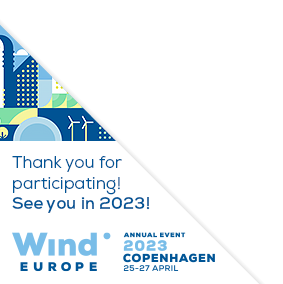Posters
Siblings:
ProceedingsProgrammeSpeakersPostersContent PartnersGlobal Markets TheatreWindTalks for InnovationProgramme Committee & Abstract ReviewersSpeaker's DashboardCome meet the poster presenters to ask them questions and discuss their work
Check the programme for our poster viewing moments. For more details on each poster, click on the poster titles to read the abstract. On Wednesday, 6 April at 15:30-16:15, join us on Level 3 of the Conference area for the Poster Awards!

PO046: On the use of jetting and fluidisation techniques for the installation of monopile foundations
Anderson Peccin da Silva, Deltares
Abstract
Monopiles are the predominant type of foundation that are used to support offshore wind turbines. With the increase in size of monopiles, challenges such as high underwater noise levels and difficult penetration into very dense sands and stiff clays have been added to the conventional impact-hammering installation method. In that context, alternative installation methods with reduced noise emissions are being developed. In that context, the SIMPLE Project (Silent Installation of MonoPiLEs) has investigated the use of fluidisation and jetting techniques aiming at future application for monopile installation. By jetting and consecutive fluidising of the soil inside the pile, the friction between soil and pile wall reduces, and consequently less energy is required for pile penetration and lower noise levels are reached. This paper presents the main developments during laboratory tests including fluidisation tests in sand and jetting tests in clay, as well as medium-scale nearshore tests. The fluidisation tests involved various transparent scaled piles, in which a series of sand columns with different properties were subjected to upwards water flow. The primary aim was to investigate the influence of relevant parameters on the fluidisation process. The jetting tests in the laboratory involved nozzles in a rotating arm positioned above the soil surface that applied water jets onto the surface such that the soil is cut through. The influence of certain parameters such as nozzle diameter and angle, water flow and pressure, on the cutting depth and speed was assessed. The outcomes of the laboratory testing programme provided guidance on the design of the equipment used in the nearshore field tests. It is hoped that, from this study, engineering practitioners learn about the relevant parameters to be investigated when designing equipment for soil jetting and fluidisation, as well as about the potential of these techniques to the offshore wind energy industry.










Follow the event on: